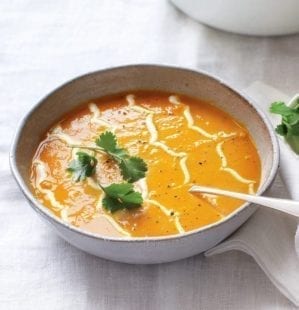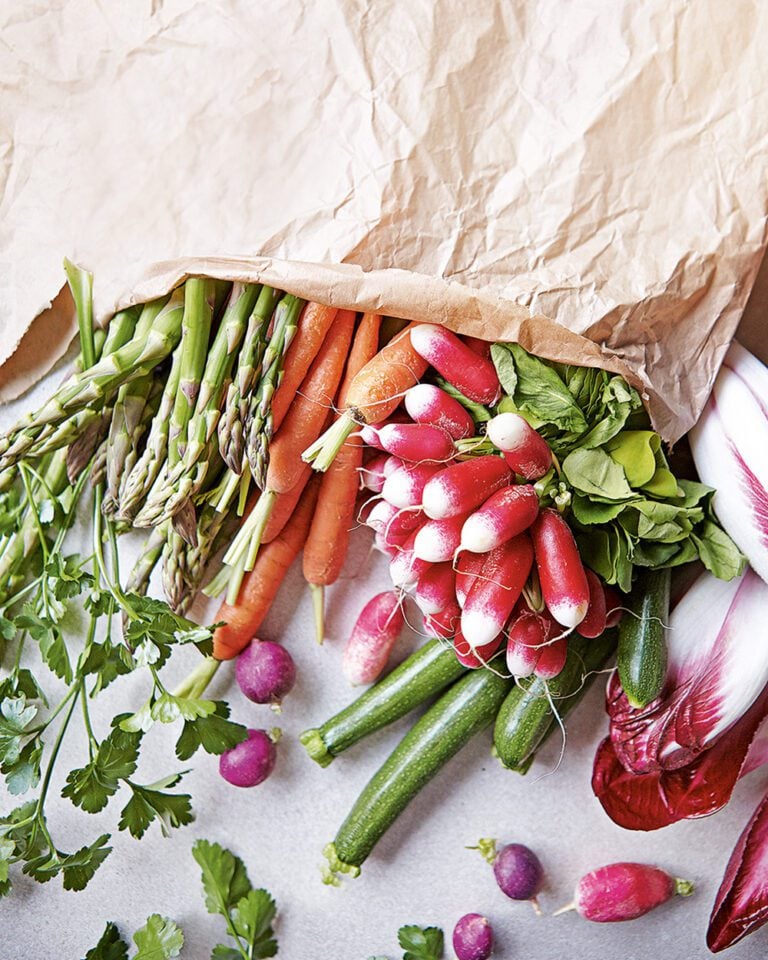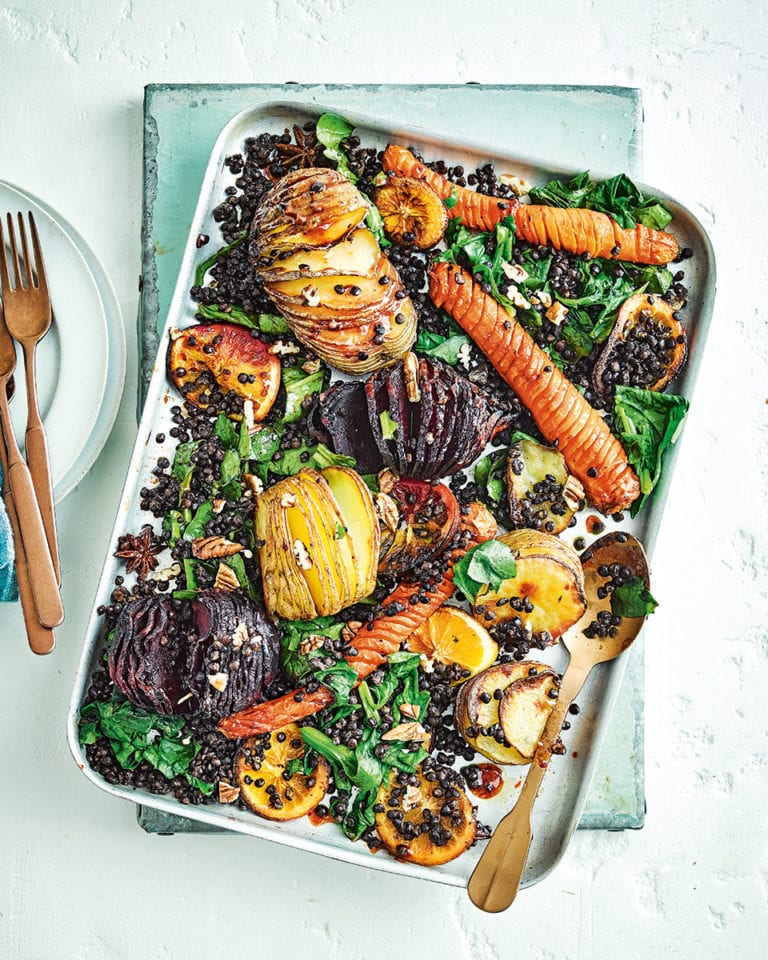Is it possible to give up ultra-processed food?
It’s the latest headline-grabbing health issue: ultra-processed food and how bad it is for you. Yet it makes up about 60% of the calories British adults consume, so how easy is it to cut back… or even eliminate completely? Food writer Sue Quinn took on the challenge. Here’s how she got on…
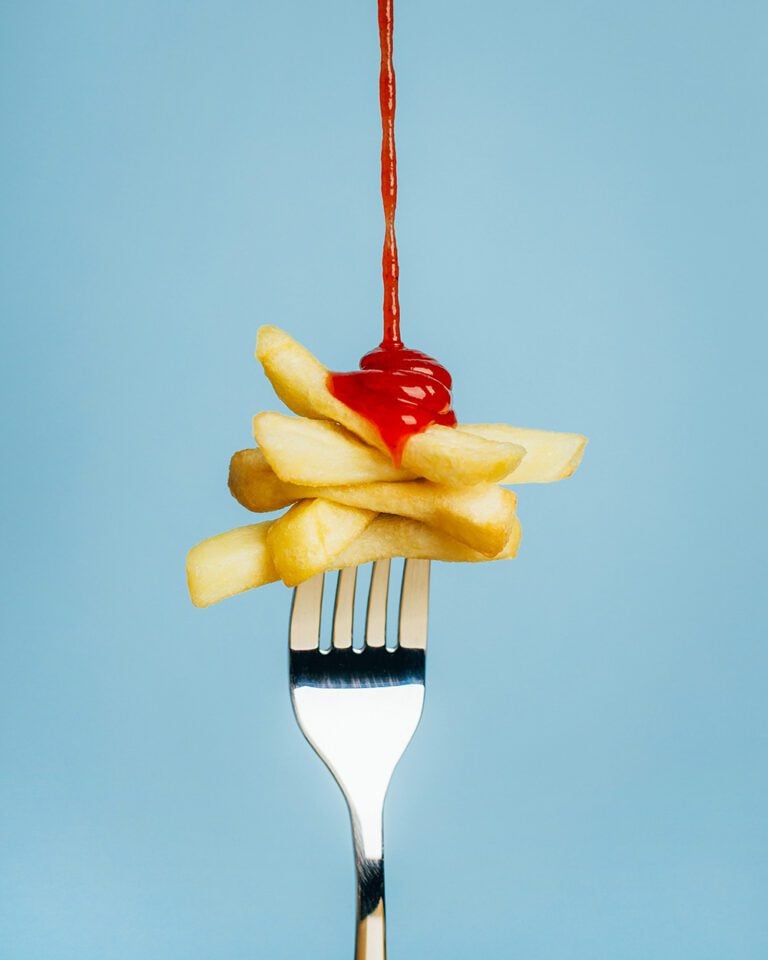
I almost always cook from scratch and avoid additives where possible, so giving up ultra- processed food (UPF) was going to be a breeze for me. Wasn’t it? So I thought, anyway. I started smugly, steering my supermarket trolley around the outer aisles where much of the fruit, veg, meat and dairy – whole, unprocessed foods – are stocked. But I quickly realised my household consumes far more UPFs than I’d considered.
My kids were coming home for the holidays and they love food that’s quick and easy to prepare before or after going out. That means pasta with pesto from a jar, fish finger sandwiches, baked beans on toast, instant noodles, frozen pizzas and breakfast cereal. We all love condiments, too, like ketchup, spicy sauces, mayonnaise and punchy chilli crisps. All potentially heavy UPF territory.
Challenge number one: the supermarket
That first UPF-free shopping trip took me considerably longer than usual. Dr Chris van Tulleken, in his book Ultra- Processed People, explains that UPFs contain substances you don’t find in standard kitchens, like emulsifiers, stabilisers, artificial colours and flavours.
To spot these, I had to scrutinise ingredients labels carefully – a time-consuming and frustrating process. There were mixed results. Most fish fingers aren’t UPF and, while Weetabix are (they’re made with malted barley extract), Dr van Tulleken says this is fine, so I added them to my trolley. But I couldn’t find a non-UPF pesto, and the kids’ favourite noodles, which come with seasoning sachets, were off the menu due to the long list of additives.
There were grey areas, too. What exactly are ‘herb extracts’ in tomato ketchup? I wasn’t sure, but they sounded like additives, so I opted for a pricier organic version, which was definitely okay. I had to buy organic baked beans, too, as the standard kind contain modified cornstarch, which makes them UPF.
Using the Open Food Facts app [see below], I found a brand of frozen pizzas that counted as processed (they contain some processed culinary ingredients, like salt and vegetable oil) but weren’t technically UPF. Flavoured crisps weren’t an option (artificial flavourings), but plain salted ones were okay… Who knew?
Something had to give
Sadly, I had to give up a favourite breakfast of eggs with a squirt of sriracha (lots of additives) and bread was problematic. I generally splash out on sourdough from my local bakery, which isn’t UPF. When the whole family is home, though, I top up with (supposedly healthy) seedy supermarket loaves, otherwise our bread bill would be astronomical. Not this month. Industrially manufactured loaves contain emulsifiers and other additives, which make them UPF. Sandwiches and toast would have to be a rare treat for the duration of this challenge.
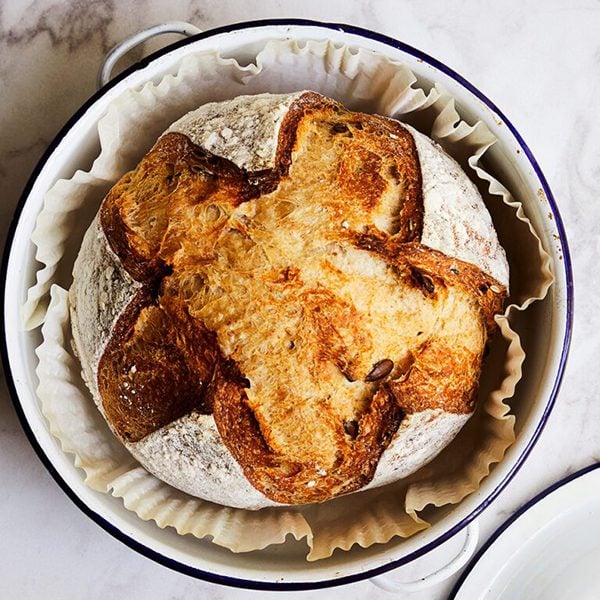
Away from home
On my journey into London for work, I realised train station food is entirely UPF, so I had to take fruit and nuts with me to snack on. Working in hotel cafés and bars was also problematic when staying overnight. One afternoon I was starving, but the only non-UPF option where I had my laptop set up was a bowl of olives.
Fast food was obviously off the menu – fine by me, at least for a month – but even eating at restaurants where I knew meals were prepared from scratch wasn’t plain sailing. On one occasion, one of our group ordered a charcuterie board to share, and I had to enquire about the provenance of the ham. (Some cured meats are UPF because they contain stabilisers that enhance the texture and colour.) This caused embarrassment all round; I felt I was being overly pernickety. I couldn’t bear to ask whether the bread was made in-house, so I ate it, hoping it was.
Wine, cider and beer – to my relief – are considered processed beverages but not ultra-processed, so it was generally business as usual on the drinks front. But one night I ordered a martini, not realising spirits fall into the UPF category. I inadvertently failed the challenge, despite my best efforts.

The verdict
I completely underestimated how much ultra- processed food my household consumes. Bread, condiments and snacks aren’t essential to our diet, but we certainly missed them. Many people, for a range of different reasons, can’t cook from scratch as often as I do, and rely on pre-prepared food and ready meals that are mostly UPF. I can only imagine how hard it would be for this group to give up UPF completely. Not to mention the added expense of buying some non-UPF items.
Reducing your intake of the ultra-processed stuff is a great idea in principle, and I’ll continue to focus on minimally processed, whole foods. But my conclusion is that it’s important to be realistic: we all have to navigate everyday life, and cutting back should be about doing what you can, where possible, not beating yourself up when you succumb to a slice of big-store toast every now and then.
Helpful guidelines
Focus on whole foods
Preferably those that don’t come wrapped in plastic.
Read the label
If there’s at least one substance in the ingredients you don’t recognise or isn’t found in a home kitchen, it’s probably UPF. Items making health claims on the packet are probably UPF, too, according to Dr van Tulleken.
Check out this resource
Open Food Facts is a database of products that identifies UPF products and their healthier alternatives.
Remember
Non-UPFs aren’t necessarily healthy, so check the labels and avoid food high in sugar, salt and fat.
Simple swaps
A caveat: check ingredients lists, as formulas change and brands vary.
Out: Standard baked beans
In: Organic baked beans
Out: Flavoured yogurt
In: Natural and greek-style; if you want to sweeten it, use honey and/or berries
Out: Flavoured crisps
In: Plain salted
Out: Shop-bought sweet biscuits
In: All-butter shortbread
Out: Plastic-wrapped supermarket bread
In: Wholemeal pitta, wholegrain rye, sourdough and loaves from independent bakeries
Out: Non-dairy milk
In: Organic non-dairy milk, bearing in mind these may cost more
Looking to eat better? Discover the rest of our food-focused health stories.
Subscribe to our magazine
Food stories, skills and tested recipes, straight to your door... Enjoy 5 issues for just £5 with our special introductory offer.
Subscribe
Unleash your inner chef
Looking for inspiration? Receive the latest recipes with our newsletter

